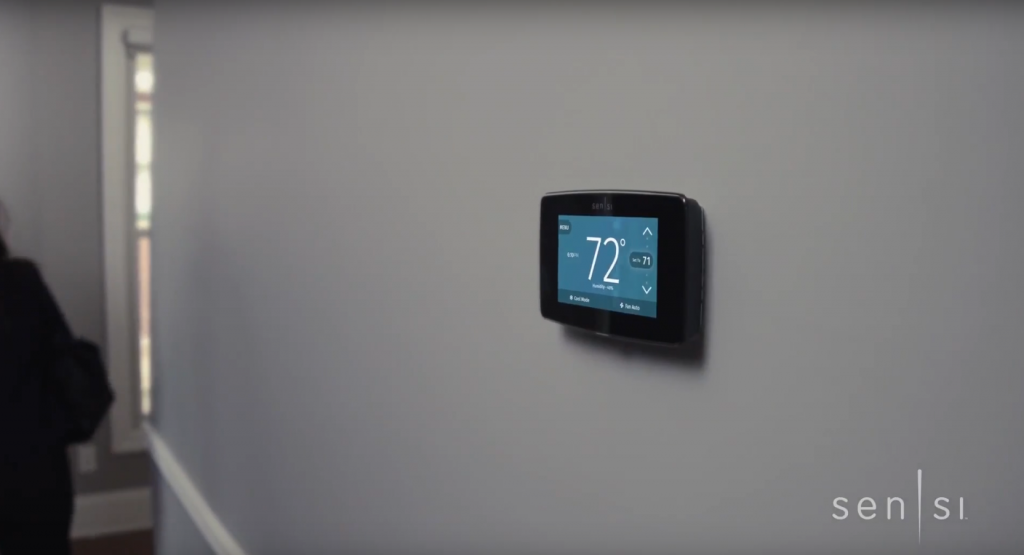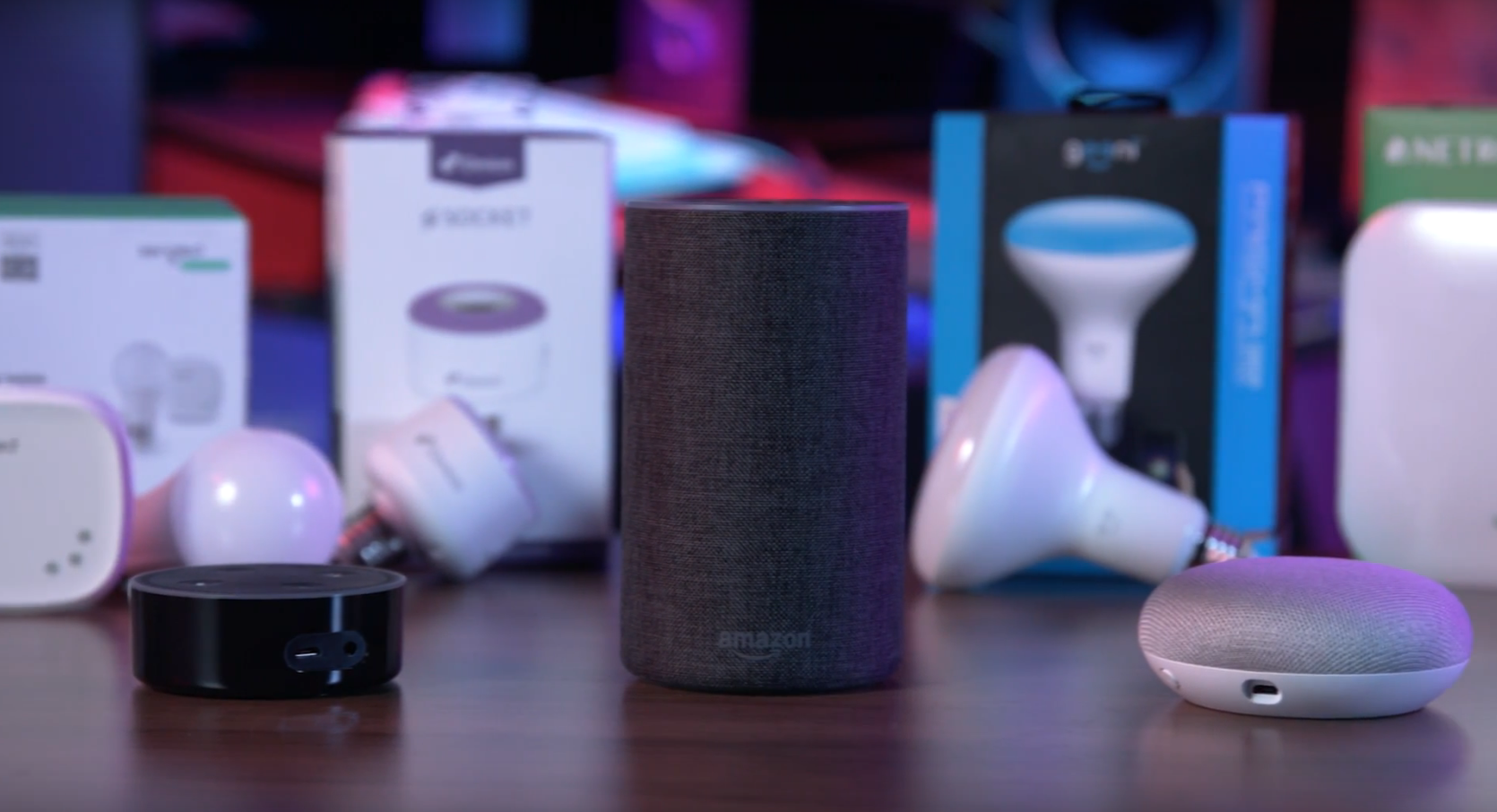
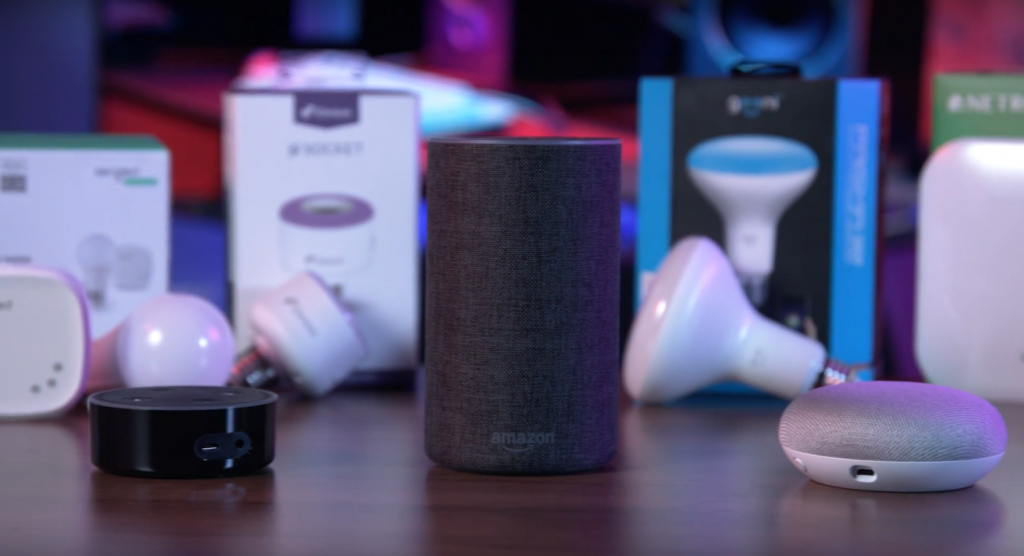
You can’t avoid them anywhere you listen to the news or music, read articles, browse social media, or even walking the street in metropolitan areas. They are in your home and on your phone. I’m talking of course, about Amazon Alexa and Google Assistant. These two friendly digital assistants have become synonymous with the Smart Home, technological advancement, and a vision of the future where people interact with hardware and software in a more human communication medium— voice.
If you haven’t heard of an Amazon Echo or Google Home device (the physical hardware that supports their digital assistant personalities), you are among the few. As of January 2018, there were 31 million Amazon Echo devices and 14 million Google Home devices sold in America, which doesn’t even take into account the growth throughout this year. A recent Nielsen report found that 19% of consumers in America use a smart speaker in the household, and that number is growing rapidly.
Voice Controllers Are the Nucleus of the Smart Home
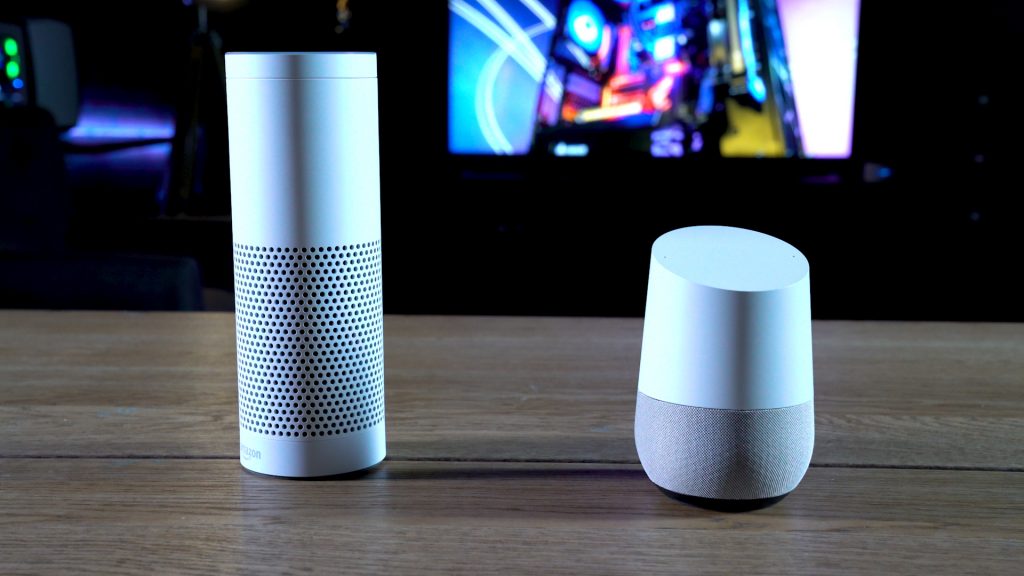
But what exactly are Amazon Alexa and Google Assistant? In short, they are voice-activated software interfaces that operate on the Amazon Echo or Google Home hardware platforms. These hardware platforms have both microphones (to enable voice communication) and speakers (to hear responses, music, news or other media). Both Amazon and Google have carved out a new niche in the market from the greater Smart Home industry with their device families which are connected to the internet to provide access to a variety of apps or web searches using voice commands to trigger action.
When they first came out, the Amazon Alexa and Google Assistant controllers were pretty limited in their functionality and had more of a novelty to them. Asking your Google Home to read the news, look up basic search information, or having Alexa tell you how to mix a White Russian cocktail was about the extent of their “smart” capabilities.
As the last few years have progressed however, the two voice controllers have become far more powerful with their smart device compatibility and have gone from a novelty to a fundamental part of the home automation ecosystem. The two Smart Home personalities have gone through several iterations, with Amazon’s hardware lineup now consisting of the Echo (both first and second generations), Echo Plus, Echo Dot, as well as three video devices in the Echo Show, Echo Look and Echo Spot. Google is behind on their hardware development in terms of count, with the full-sized Google Home and the smaller Google Home Mini in the roster of devices.
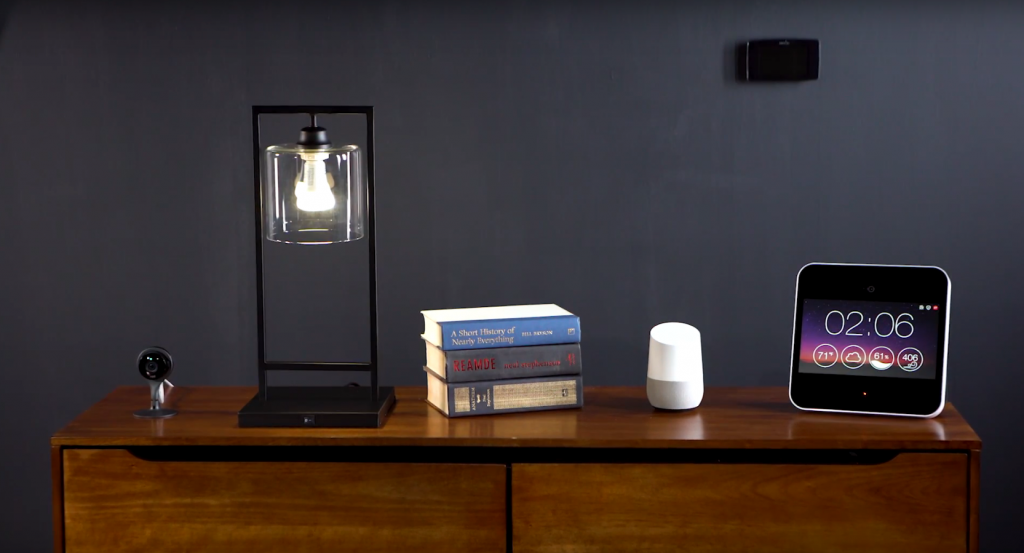
These devices act as networking hubs for smart devices, pairing with them via a wireless connection to enable voice access for the compatible devices. It works something like this— if you have a smart LED light for example that has Amazon Alexa compatibility, you would download the device’s app on your smartphone. Then you would go into the Alexa Skills section on the app, and enable that smart light’s “skill”. This process is very similar for the Google Assistant, in the Google Home app. Now you have voice control over said paired smart device, and you can start building a connected home.
To date, there are over 20,000 smart devices that are compatible with Amazon Alexa, while Google Assistant compatibility lags behind with a mere 5,000 (sarcasm intended). This massive market for device connectivity is a huge win for consumers looking to create a Smart Home, because most new products coming out in the market have either one, if not both, of the voice controllers as an integration partner.
This slugfest between the two tech giants vying for Smart Home market share is a benefit for those looking to build outwards from the hub, as users don’t have nearly the dilemma they once did choosing one platform over the other and being locked into a specific set of devices. While ensuring compatibility is still important, it comes more into play with devices that connect to the voice controllers indirectly, namely those that operate on Z-Wave or Zigbee protocols.
These protocols are different than the traditional Wi-Fi signal many smart devices (Amazon Echos and Google Homes included) operate on, and require a hub that speaks their own language to translate for communication with the smart hubs.
The Elephant in the (Smart) Room
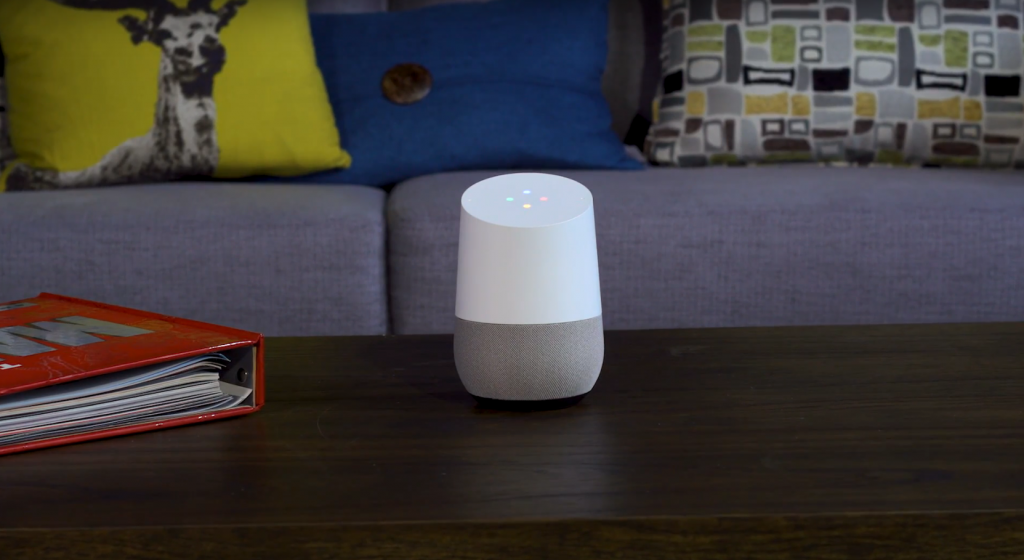
With new internet-connected tech comes new challenges, namely security concerns. The Smart Home space is far from sheltered from this, and in fact, there are major privacy concerns from those that fear hacking from devices on home Wi-Fi networks. The idea is that if a network can be hacked, more devices (surveillance cameras, door locks, garage doors, etc) are accessible to those looking to do harm. Additionally, some companies that create smart devices are not as focused on security as they should be, with sub-par measures in place to stop someone from hacking into say a sprinkler controller, and backing into the main network.
While the majority of connected home companies are putting measures in place to prevent this sort of behavior from taking place (and the likelihood of an average home being hacked via smart devices is far lower than a crook with a crowbar bashing into the home physically), privacy becomes a huge concern with these voice controller hubs having the ability to listen, and therefore record.
If you haven’t thought about it, take a minute to. By using voice-recognition technology, these hubs need to be constantly, well, recognizing your voice. That means that they are always on and scanning audio for the trigger words to turn them on and serve you. So do Amazon Alexa and Google Assistant record everything? Well while the parent companies deny the data is recorded for their use, skeptics are far less easily appeased by these claims.
With Amazon and Google being two out of the three big widespread data companies with access to the population (Facebook seems content with their control of the social networking for now), it gives a new meaning to “big data” by having them plugged directly into user homes. Even the least cynical would have to admit that these two companies focused on user experience improvement and in the hyper-competitive internet space, customer data analysis for R&D is well within the realm of probability.
What can you do with Amazon Alexa and Google Home?
At the end of the day though, the purpose for these devices is not to maliciously spy on consumers or scare anyone about Big Brother watching us sleep, it is to establish a greater control over our inanimate devices and offer ease of use. Connecting devices to one another and us at all times allows for an improvement in operation, greater awareness of our surroundings, and more efficiency with our evolving connected life.
There are a few really fun areas of exploration that smart devices tap into around the home, which allow for Amazon Alexa and Google Assistant to offer voice control in some intuitive ways when paired with new Smart Home technology.
Smart Lighting & Plugs
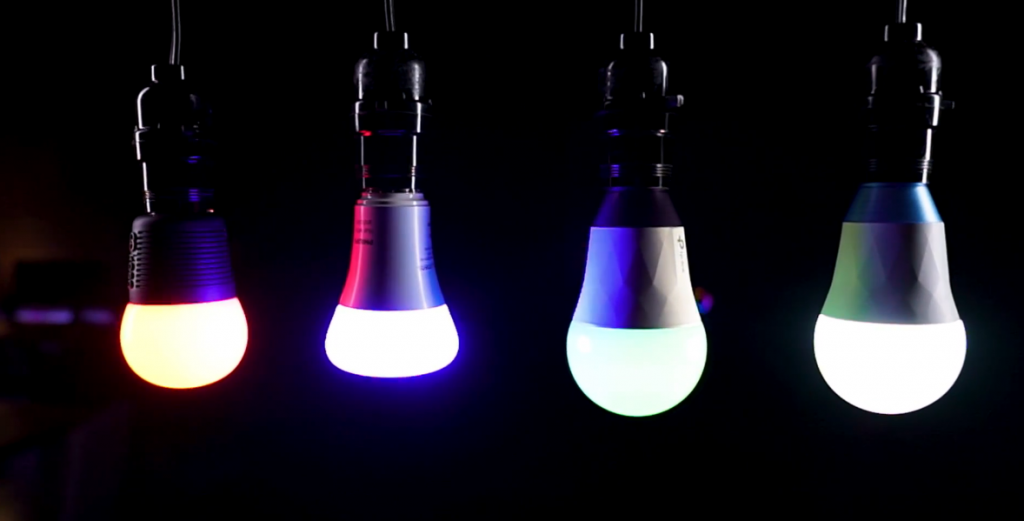
While most of us don’t lament at the fact we have to stand up and walk across the room to turn on a light switch, connected lighting opens the door for a world of possibility for remote control. Beyond the operation of LED bulbs, LED strips, smart plugs, or even smart outdoor switches with voice command, pairing smart lighting devices with Alexa or Google Assistant allows for specific settings to be enabled instantly.
For most devices, that covers the simple on/off command, as well as dimming for LEDs and even color-changing for RGB lighting equipment. When set up with the appropriate apps, smart lighting and plugs can be strung together in a scene, where one command can operate numerous devices. For instance, an “Ok Google, play movie night” command can trigger multiple lights to turn off, the TV to turn on, and some backlighting to drop to minimal illumination for the best viewing experience.
Smart lighting and plugs also are great for energy savings, because while they are all LED and use less energy during operation, the ability to have them programmed to user schedules or controlled from anywhere eliminates the need to have lights on during times when they are not in-use.
While the space of smart lighting and plugs is packed full of innovative brands, key players like iDevices, Philips Hue, Geekbes, TP-Link, Sengled, Geeni, Ring, Maximus and many more offer great solutions for the connected home with Amazon Alexa and Google Home.
Smart Thermostats
Connected thermostats allow for some incredibly intuitive control, not just for operating programming via smartphone, but also for sometimes automatically triggering heating or cooling based on the outdoor temperature or user proximity to the home. This of course saves cost and energy on normal operation, however, Amazon Alexa and Google Assistant compatibility can also aid in instant gratification for comfort.
With a simple “Alexa, set the temperature to 75°”, compatible thermostats will hop-to and instantly adjust the setting whether your hands are full cooking dinner or you are lounging on the couch.
Smart thermostats are not nearly as saturated as much of the other Smart Home industries, and a few of the key brands are Nest, Emerson, Ecobee, Honeywell, iDevices, and Vine.
Smart Security Cameras
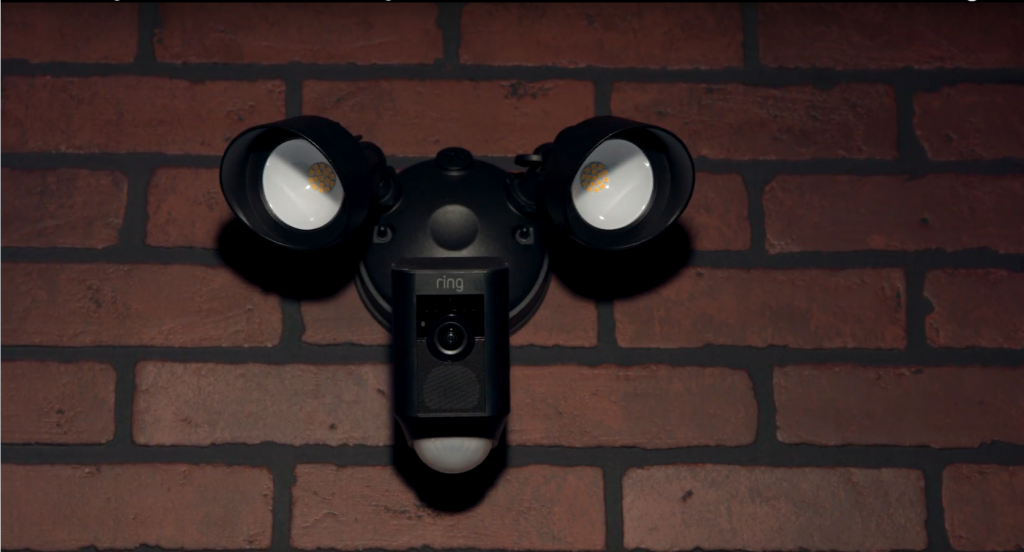
Surveillance systems are arguably one of the greatest forms of control that users can get over their home and family well-being, and smart security cameras take that a whole lot further. Connected surveillance systems can be used within the home for monitoring a baby’s room to make sure they are sleeping well, to providing insight into what is happening around the home perimeter while you are away.
By pairing smart surveillance cameras with Amazon Echo and Google Home devices, users can give a command to broadcast the video feed onto their TV (with appropriate Amazon Firestick or Google Chromecast hardware), or even display it on the Echo Show or Echo Spot devices directly.
While the smart security camera space is not nearly as useful with voice controllers as it is simply by using the app for remote viewing and even communication, many brands are paving the way for innovative use to help deliver peace of mind like Netgear’s Arlo, LaView, Nest, Maximus, Blink, and EZVIZ are just a few of the brands that are making the connected surveillance space more accessible.
Smart Locks & Access control
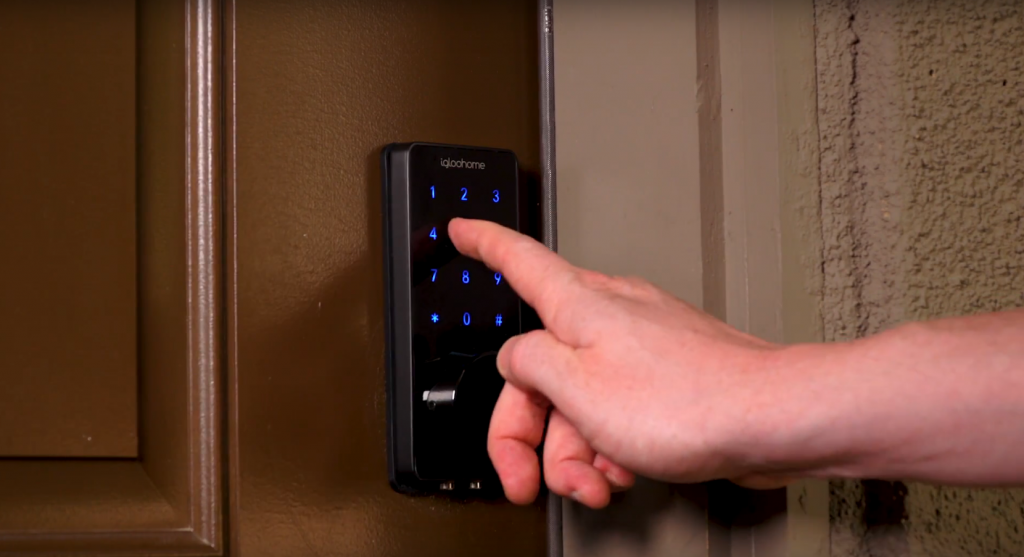
While people often joke about the automated door using “Open Sesame” command, we aren’t too far off from that reality with smart door locks and access control devices. Smart door locks allow for users to set pins for visitors, unlock and lock remotely, and most importantly receive activity logs when certain actions are engaged to have complete control of the home.
While locks are what first comes to mind, smart doorbells with video cameras also allow users to have a level of security and visibility over what goes on at their home than ever before. Some brands like Ring and Maximus are also pushing the envelope by offering smart security lights that have cameras built in with motion sensors and lighting, to aid in preventative security.
When paired with the Amazon Alexa or Google Assistant voice controllers users can remotely engage or disengage locks, or even open and close garage doors with just a simple voice command. Innovative companies in this space are Yale, Garadget, Nexx Garage, Ultraloq, August, Igloohome, and Lockey.
Smart Irrigation
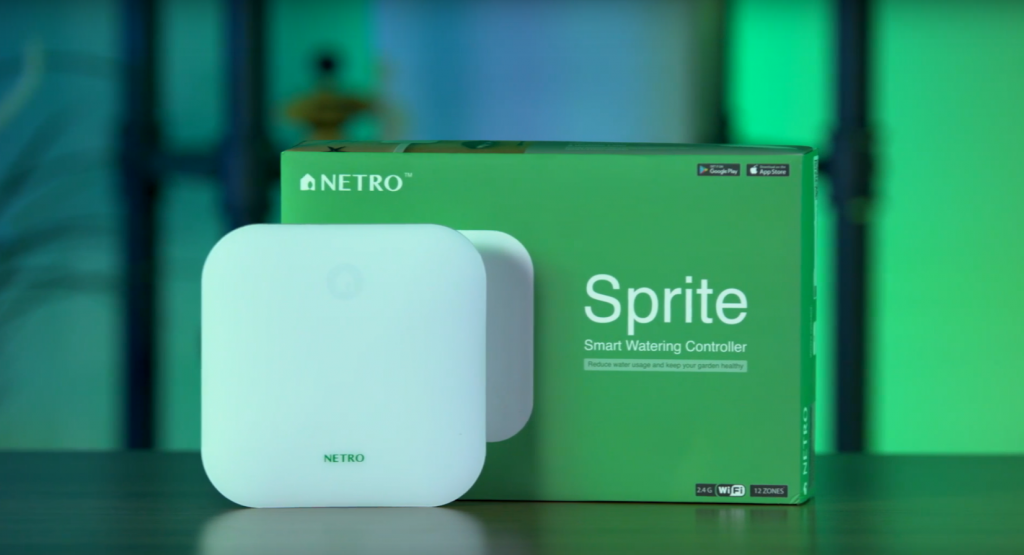
Like connected lighting, plugs, and thermostats, a big benefit of automating the irrigation system around the home is for energy savings. Smart sprinkler controllers can not only utilize advanced scheduling, remote operation and measurements for soil moisture levels, they can also have adaptive programming based on the weather.
This not only ensures that vegetation stays green all year-round, it allows for just the right amount of water consumption without wasting. While this is all well and good for use with a phone, when compatible models sync up with Amazon Alexa or Google Assistant a simple “Alexa, run program A on zone 3” can trigger an additional start/stop watering cycle when needed.
The smart irrigation space is limited, and the brands doing it so far seem to be doing it well. RainMachine, Orbit b-hyve, Rachio, Netro Sprite, GreenIQ and Sprinkl are some of the winners in this vertical.
Which Amazon Alexa or Google Home Device is the Best?
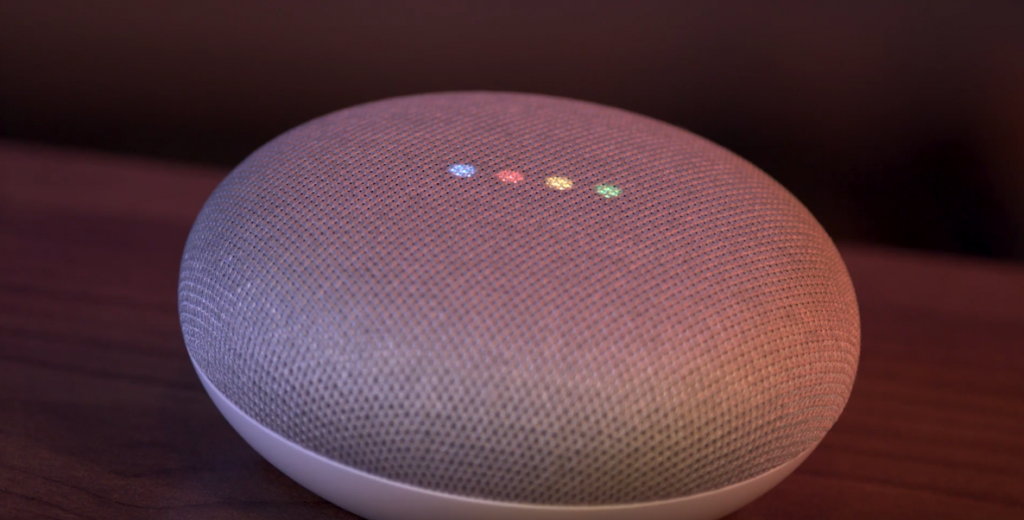
While each application offers the same basic functionality of voice command control and connectivity to other smart devices, the devices themselves have a few different characteristics between one another that set them apart, but at the end of the day it really comes down to personal preference.
Amazons Echo Dot ($49.99) and Google Home Mini ($49.99) are both on a similar playing field when it comes to size, price, and speaker power. These are great for those who want something covert or have limited counter space and don’t plan on using their voice controller as a prime media player.
Amazon Echo ($99.99) and Google Home ($105) are the flagship models for each brand, and these are the larger units. Definitely noticeable on a countertop, they have much larger speakers and do a reasonable job of getting sound distributed throughout the house. You won’t be hearing the fine details of music with these (not for the audiophile critique), but for listening to jams while hanging out or reading the news while getting ready, they definitely do the job. The price is of course also larger with these models.
Amazon takes their line further into the video realm with the Echo Show ($135.99) and Echo Spot ($129). The Echo Show was their first stab into the video screen space and features a seven-inch screen, which can make video calls and display security surveillance feeds. If so inclined, you can also watch Amazon Prime video content as well as listen to audio content. The Echo Spot is the second-gen video voice controller, and features a more rounded design that is sleeker, but also has a smaller (2.5”) screen. The price difference of $100 between the two is steep as well, so if you are on a budget or want a less-conspicuous Smart Home hub, the Echo Spot might be better for you.
Voice Controllers are the Future, But How Far Will They Go?
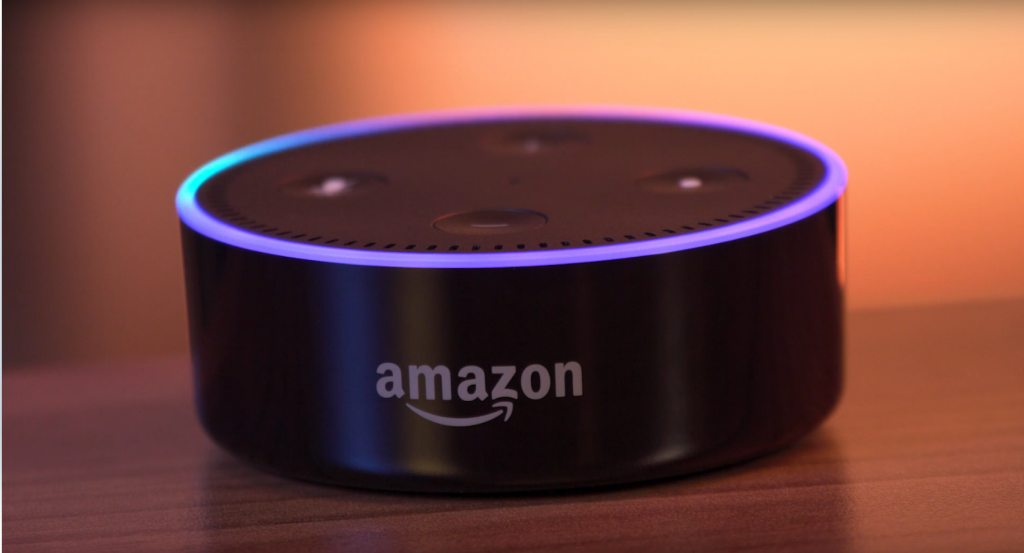
It’s hard to say what the future holds for the Smart Home since the industry and technology are evolving so quickly. A few years ago nobody would have been able to sell me on the idea that I could view a video feed on my phone from a surveillance camera at my house while sitting on a beach, or control my door locks with just a simple voice command. But that is the reality we have today, and I have a feeling we are just getting warmed up.
Voice controllers aren’t stopping at the front door though, with smart automotive devices like the Muse Alexa for your car, all the smart device control is now available on a compact device that can stick to the dashboard of your vehicle. This little gadget not only has all the functionality of a full-sized Amazon Echo device, but it is also with you wherever you drive.
The tech world will likely take us to places we never thought possible or even necessary, but innovation and the Smart Home go hand in hand. Who knows, this time next year our smart refrigerators might be automatically ordering our favorite foods when we run low, or doing something useful like letting the dog out to use the bathroom when duty calls at 1am.
Discover more about everything Smart Home here.

